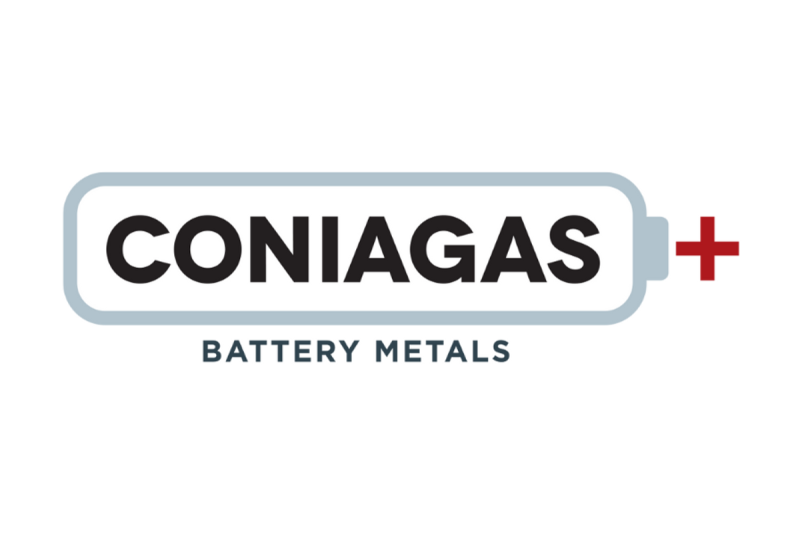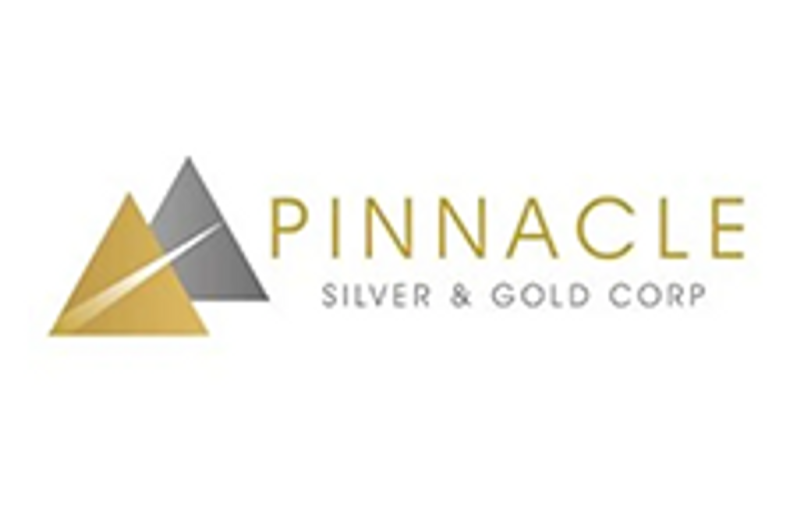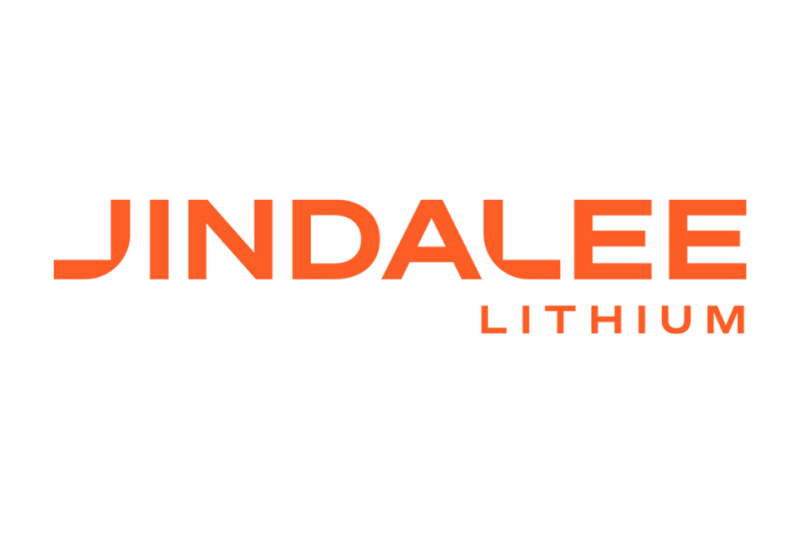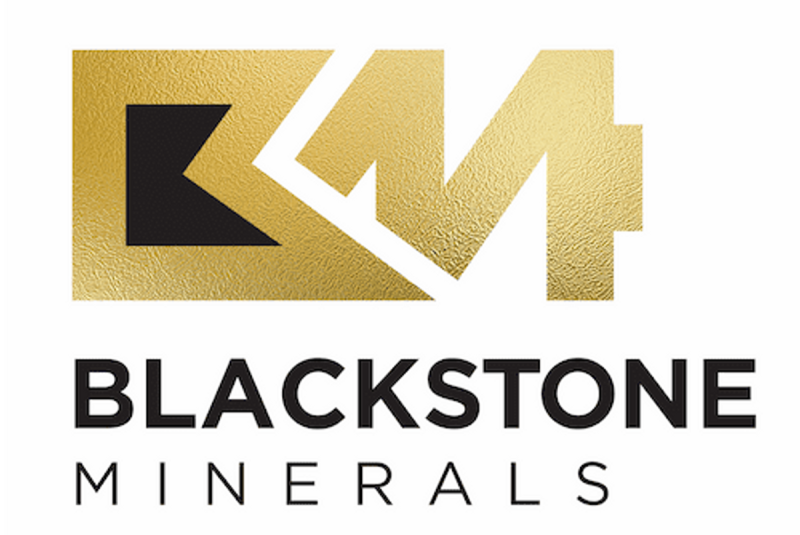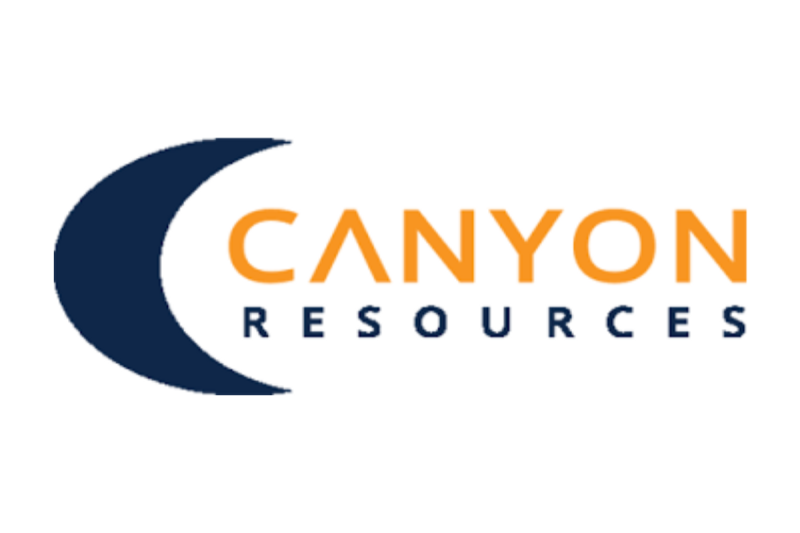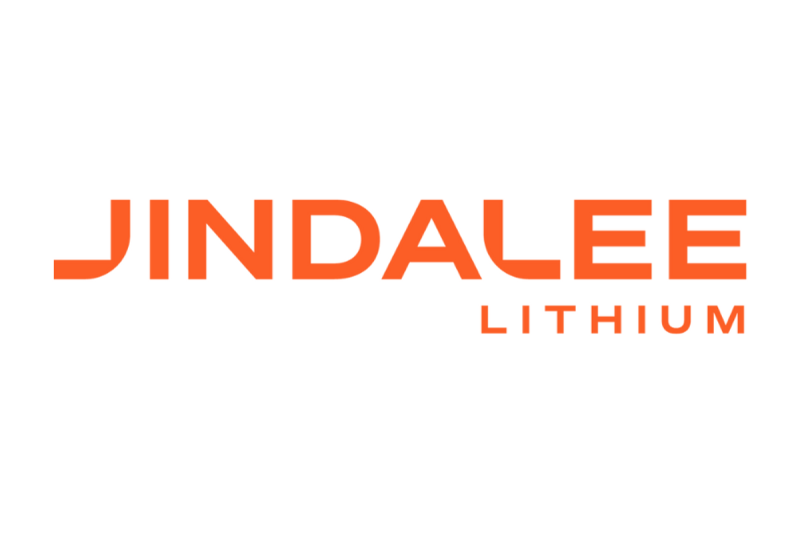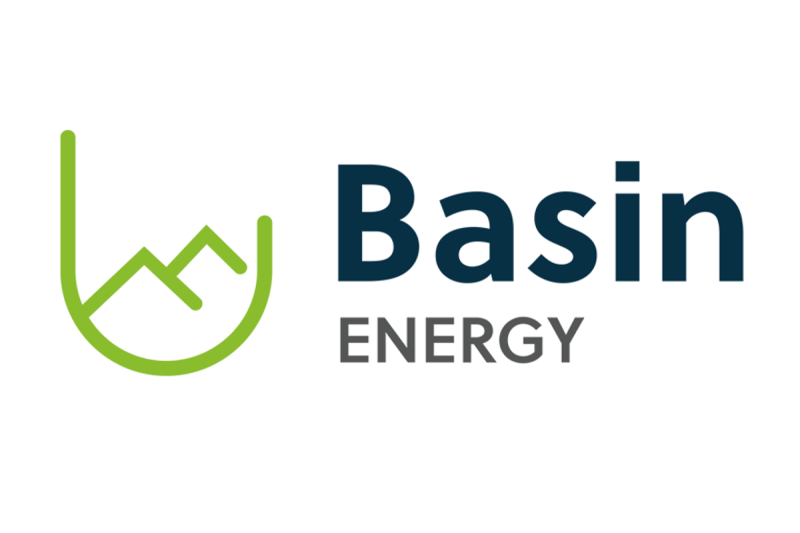Investing
Pinnacle Closes Non-Brokered Private Placement and Associated Acquisition of El Potrero Option
(TheNewswire)
The Part-and-Parcel private placement was fully subscribed and raised gross proceeds of $800,000, subject to final TSXV approval. The placement consists of 20,000,000 units (the ‘Units’) at a price of $0.04 per Unit, with each Unit comprising one common share (‘Share’) in the capital of the Company and one-half share purchase warrant (‘Warrant’), whereby each whole Warrant shall be convertible into an additional Share at an exercise price of $0.06 for a period of 24 months from the date of issuance. No f inder’s fees were paid.
The net proceeds raised from the Financing will be used for exploration and development of the Potrero Project, payment of the back-taxes, and for working capital.
All securities to be issued will be subject to a four-month hold period from the date of issuance and subject to TSX Venture Exchange approval. The securities offered have not been registered under the United States Securities Act of 1933 , as amended, and may not be offered or sold in the United States absent registration or an applicable exemption from the registration requirements.
Insiders subscribed for an aggregate of 648,500 Units for a total of $25,940. As insiders of Pinnacle participated in the financing, it is deemed to be a ‘related party transaction’ within the meaning of Multilateral Instrument 61-101 Protection of Minority Security Holders in Special Transactions (‘MI 61- 101’). Pinnacle is relying on the exemptions from the formal valuation and minority approval requirements contained in Sections 5.5(a) and 5.7(1)(a) of MI 61-101, on the basis that the fair market value of the transaction does not exceed 25% of the Company’s market capitalization. The Company will be filing a material change report in respect of the related party transaction on SEDAR.
Subject to final TSXV approval, it is anticipated that the Company’s share will resume trading effective at the open on February 28, 2025.
About Pinnacle Silver and Gold Corp.
Pinnacle is focused on district-scale exploration for precious metals in the Americas. The addition of the high-grade Potrero gold-silver project in Mexico’s Sierra Madre Belt will complement the Company’s project portfolio and provide the potential for near-term production . In the prolific Red Lake District of northwestern Ontario, the Company owns a 100% interest in the past-producing, high-grade Argosy Gold Mine and the adjacent North Birch Project with an eight-kilometre-long target horizon . With a seasoned, highly successful management team and quality projects, Pinnacle Silver and Gold is committed to building long -term , sustainable value for shareholders.
Signed: ‘Robert A. Archer’
President & CEO
For further information contact :
Email: info@pinnaclesilverandgold.com
Tel.: +1 (877) 271-5886 ext. 110
Website: www.pinnaclesilverandgold.com
Neither the TSX Venture Exchange nor the Investment Industry Regulatory Organization of Canada accepts responsibility for the adequacy or accuracy of this release .
Copyright (c) 2025 TheNewswire – All rights reserved.
News Provided by TheNewsWire via QuoteMedia
Investor Insight
Jindalee Lithium’s flagship McDermitt Lithium Project (McDermitt) offers investors exposure to a generational, high-margin critical minerals asset. The recently completed Pre-Feasibility Study (PFS) demonstrates robust economics, positioning McDermitt as a key enabler of North America’s clean energy transition and a cornerstone of the US critical minerals strategy to de-risk supply chains through increased domestic production.
Overview
Jindalee Lithium (ASX:JLL,OTCQX:JNDAF) is a pure-play lithium company with a strategic focus on the United States. Its 100 percent-owned McDermitt Lithium Project is the largest lithium deposit in the US, boasting a resource of 21.5 million tons (Mt) of lithium carbonate equivalent (LCE).
Backed by a recently released (November 2024) Pre-Feasibility Study (PFS) demonstrating very compelling economics, McDermitt is poised to play a crucial role in meeting North America’s growing lithium demand for battery materials.
As the US continues to transition to clean energy, demand for lithium is expected to exponentially increase. Jindalee’s McDermitt project, located in southeast Oregon, is a game-changer for North American lithium supply, critical for meeting the demands of a fast-growing electric vehicle and renewable energy industries with specific emphasis on developing and de-risking domestic supply chains.
McDermitt also stands to significantly benefit from the US government’s policies and incentives to boost domestic supply of critical resources. In fact, in a move that signifies the US government’s support of the McDermitt Project, the US Department of Energy’s Ames National Laboratory signed a Cooperative Research and Development Agreement (CRADA) with Jindalee’s subsidiary HiTech Minerals to develop cutting-edge extraction methods for McDermitt. Under this agreement the US Department of Energy (DOE) will fund work aimed at reducing costs and improving sustainability outcomes for the Project. The Ames National Laboratory spearheads the DOE’s Critical Materials Innovation Hub. Jindalee is also advancing an application for a grant from the US Department of Defense, which has the potential to co-fund a feasibility study and associated work programs at McDermitt.
Key milestones in the US lithium resource space also provide significant insights into the future prospects for McDermitt. Lithium Americas’ (TSX:LAC), has received a US$945 million commitment from General Motors, to fund the development, construction and operation of the Thacker Pass project in Humboldt County, Nevada, located 30km away from and in the same geological formation as Jindalee’s McDermitt Lithium Project. LAC has also closed a $2.3 billion US Department of Energy loan in late 2024 to fund approximately 75 percent of the construction capital cost (US$2.93B).
Another lithium resource developer in Nevada, Australia-based Ioneer (ASX:INR) is expected to receive a total investment of US$700 million through a new joint venture with Sibanye Stillwater, in addition to a conditional loan commitment of US$650 million from the US Department of Energy, both acting to strengthen the development of its flagship Rhyolite Ridge lithium-boron project.
In late 2024, ASX-listed company Patriot Battery Metals Inc (ASX:PMT) announced a C$69 million investment, strategic partnership and offtake agreement with global automotive group Volkswagen which aims underpin the development of Patriot’s upstream lithium project in Quebec, Canada.
These are just a few examples of current market dynamics that point to rapidly accelerating lithium resource development in the US and Canada demonstrating the investment appetite of strategic partners, as well as support from the US government via low-cost concessional debt funding.
An experienced management team, with the right blend of experience and expertise in project development, corporate administration and international finance provides Jindalee with the leadership to fully capitalise on the potential of its assets.
Company Highlights
- Jindalee Lithium is focused on its wholly owned flagship McDermitt Lithium Project, currently the largest lithium deposit in the US
- A PFS for McDermitt – delivered in November 2024 – supports very strong project economics, including a US$3.23 post-tax NPV and a 5 year capital payback period over a 63 year project life
- Jindalee’s McDermitt Lithium Project seeks to assist in the development of US critical minerals supply chains to enable America to meet its energy security and electrification goals
- Jindalee’s wholly owned US subsidiary HiTech Minerals has executed a strategic Cooperative Research and Development Agreement (CRADA) with the US Department of Energy (DOE) as part of the DOE’s Critical Materials Innovation (CMI) Hub
- McDermitt is located in the same geological formation and is of similar size and scale to Lithium Americas’ Thacker Pass Project, which is backed by major investments from General Motors and the US Department of Energy and is currently under construction
- McDermitt is eligible for a wide range of government incentives including tax credits, grants and concessional loans. Jindalee is currently progressing a grant application with the Department of Defense to potentially co-fund a feasibility study at McDermitt
- In collaboration with lead engineer Fluor, Jindalee has produced battery grade lithium carbonate from McDermitt’s lithium bearing ore in metallurgical testwork.
- Experienced management team is focused on maximising the potential of Jindalee’s assets.
Key Project
McDermitt Lithium Project Economics
The economic metrics revealed in the PFS paint a compelling picture of the McDermitt Lithium Project’s potential:
Production Capacity: The Project is set to produce 1.8 Mt of battery-grade lithium carbonate over its first 40 years, with an annual output forecast of 47,500 tonnes per annum (tpa) in the initial 10 years, and averaging 44,300 tpa over the first 40 years.
Financial Metrics: The Project boasts a post-tax net present value (NPV) of US$3.23 billion at an 8 percent discount rate, with an internal rate of return (IRR) of 17.9 percent. These figures underscore the Project’s strong economic viability.
Payback Period: Investors can expect a payback period of less than five years, a relatively short timeframe for a project of this magnitude.
Robust margins: Exceptional EBITDA margins of 66 percent over the first 10 years of operations, with C1 costs in the bottom half of industry and 17 percent pre-tax net operating cashflow margins (including sustaining capital) at current bottom of the cycle spot prices (October 2024 spot of US$10,888/t of lithium carbonate)
Significant future upside. Several opportunities identified in the PFS have potential to significantly enhance returns, which includes process optimisation to reduce opex/capex as well as potential for production of by-products. Additionally, there remains significant optionality to further exploit the ore body, with only ~15 percent of the current resource included in the PFS schedule (on contained metal basis).
The PFS estimates a total project cost of US$3.02 billion, which includes a conservative 21 percent contingency provision estimated on P70 basis (70 percent probability total capital cost will be lower), prepared by US headquartered global engineering and construction firm, Fluor Corporation. This substantial investment is expected to provide the platform for a long life, stable supply of domestically sourced battery grade lithium chemicals, which is expected to be highly attractive to partners in the battery value chain.
Project Overview
The McDermitt Project is located in Malheur County on the Oregon-Nevada border and is approximately 35 kilometres west of the town of McDermitt. The 100-percent-owned asset covers 54.6 square kilometres of claims at the northern end of the McDermitt volcanic caldera.
The Project is characterised by its unique sedimentary lithium deposits, primarily composed of lithium-bearing clays, a geological formation that sets McDermitt apart from many other lithium projects worldwide. This sedimentary nature of the deposit offers several advantages, including:
- Consistent grade distribution throughout the ore body
- Potential for large-scale, low-cost mining operations
- Amenability to environmentally friendly extraction methods
The lithium-rich clays at McDermitt are part of a broader geological context that includes volcanic tuffs and sedimentary rocks. This geological setting is indicative of a complex depositional history, which has resulted in the concentration of lithium in economically viable quantities.
The 2023 mineral resources estimate (MRE) for McDermitt contains a combined indicated and inferred mineral resource inventory of 3 billion tonnes at 1,340 parts per million (ppm) lithium for a total of 21.5 Mt LCE at 1,000 ppm cut-off grade. As part of the PFS, a maiden ore reserve estimate was declared of 251 @1,761 ppm Lithium for 2.34 Mt LCE (representing only ~11 percent of MRE)
Project Highlights:
- Rare Sediment-hosted Lithium Deposits: The McDermitt asset supports low-cost mining operations due to its flat-lying sediments. This type of lithium deposit is amenable to low-cost mining operations, while still producing excellent metallurgical results.
- Low cost mining. Ore is soft, free-digging material, located at surface with a strip ratio of only 1.3 over project life. As a result mining costs are relatively low.
- Fluor recommended processing route: In March 2023, US engineering group Fluor reviewed all testwork undertaken at McDermitt and recommended beneficiation and acid leaching as the optimal processing route (similar to that used by more advanced peers in the region).
- High metallurgical recovery. PFS test work demonstrated exceptional recoveries through beneficiation and acid leaching steps, with an average metallurgical recovery of 84.4 percent over first 40 years, comparing favourably to industry peers.
Management Team
Ian Rodger – Chief Executive Officer
Ian Rodger is a qualified mining business executive with almost 15 years of experience in various roles including as a mining engineer for Rio Tinto across two large greenfield mine developments, before successfully transitioning into mining corporate finance where he held Executive and Director positions at RFC Ambrian overseeing origination and management of numerous mandates across a range of corporate advisory roles. Ian was the project director for Oz Minerals (ASX:OZL) where he made significant contributions to successfully define the value potential of the West Musgrave nickel/copper province through the delivery of a portfolio of growth studies. Most notably, he led technical, market and partnership development workstreams, successfully confirming value potential for producing an intermediate Nickel product for the battery value chain.
Ian holds a Bachelor of Mining Engineering from the University of Queensland, a Masters of Mineral Economics from Curtin University and is also a graduate of the Australian Institute of Company Directors and member of the Australasian Institute of Mining and Metallurgy.
Lindsay Dudfield – Executive Director
Lindsay Dudfield is a geologist with over 40 years of experience in multi-commodity exploration, primarily within Australia. He held senior positions with the mineral divisions of Amoco and Exxon. In 1987, he became a founding director of Dalrymple Resources NL and spent the following eight years helping acquire and explore Dalrymple’s properties, leading to several greenfield discoveries. In late 1994, Lindsay joined the board of Horizon Mining NL (Jindalee Lithium’s predecessor) and has been responsible for managing Jindalee Lithium since inception. Lindsay is a member of the Australasian Institute of Mining and Metallurgy, the Australian Institute of Geoscientists, the Geological Society of Australia and the Society of Economic Geologists. He is also a non-executive director of Jindalee spin-out companies Energy Metals (ASX:EME), Dynamic Metals (ASX:DYM) and Alchemy Resources (ASX:ALY).
Wayne Zekulich – Non-executive Chair
Wayne Zekulich was appointed to the board as Chair on 1 February 2024. He holds a Bachelor of Business and is a fellow of the Institute of Chartered Accountants. Zekulich is a consultant and non-executive director who has substantial experience in advising, structuring and financing transactions in the infrastructure and resources sectors. He was previously the head of Rothschild in Perth, chief financial officer of Gindalbie Metals Limited, chief development officer of Oakajee Port and Rail and a consultant to a global investment bank. Currently, he is chair of Pantoro (ASX:PNR) and non-executive director of the Western Australian Treasury Corporation. In the not-for-profit sector, he is the past chair of the Lester Prize and is a mentor in the Kilfinan program.
Darren Wates – Non-executive Director
Darren Wates is a corporate lawyer with over 23 years of experience in equity capital markets, mergers and acquisitions, resources, project acquisitions/divestments and corporate governance gained through private practice and in-house roles in Western Australia. Darren is the founder and principal of Corpex Legal, a Perth-based legal practice providing corporate, commercial and resources related legal services, primarily to small and mid-cap ASX listed companies. In this role, he has provided consulting general counsel services to ASX listed company Neometals (ASX:NMT) since 2016, having previously been employed as legal counsel of Neometals. Darren holds Bachelor’s degrees in Law and Commerce and a Graduate Diploma in Applied Finance and Investment.
Paul Brown – Non-executive Director
Paul Brown has over 23 years of experience in the mining industry, most recently with Mineral Resources (ASX:MIN) where he was chief executive – lithium, and chief executive – commodities. Paul has held senior operating roles with Leighton, HWE and Fortescue (ASX:FMG) and has a strong track record in technical leadership, project/studies management, and mine planning and management. Paul is currently CEO of Core Lithium Limited (ASX:CXO). He holds a Master in Mine Engineering.
Brett Marsh – VP Geology and Development (US)
Brett Marsh is an AIPG certified professional geologist and a registered member of the Society for Mining, Metallurgy and Exploration (SME) with over 25 years of diverse mining and geological experience. He has worked for and held senior leadership roles for Kastan Mining, Luna Gold, Kiska Metals, Newmont, Freeport-McMoRan, Phelps Dodge, ASARCO and consulted to deliver numerous NI 43-101 technical reports. Brett has demonstrated the ability to deliver results in culturally diverse and geographically difficult environments, such as Brazil, Peru, Chile, Democratic Republic of Congo, Ghana, Tanzania, Indonesia, Australia, and has also worked in remote areas of Alaska. He has managed all phases of the mining lifecycle including greenfield and brownfield exploration, project development (including preliminary economic assessments, pre-feasibility and feasibility), project construction, mine operations, and environmental. He successfully led multi-cultural teams to develop business processes and implementation plans for many mine development and operational projects.
Canadian mining industry investment has faced significant challenges over the past decade. There is a common understanding that funding isn’t moving through the sector, especially to juniors.
These small companies represent the foundation for mining in Canada, performing most exploration, and one program that has helped steer investment their way is the federal government’s Mineral Exploration Tax Credit (METC).
The program has been in place for the past two decades, but is set to expire on March 31, 2025.
With parliament prorogued, the mining industry is concerned that the METC will lapse and is calling for its renewal.
What is the Mineral Exploration Tax Credit?
The METC is a 15 percent credit that was created by Canada to help exploration companies raise money. It serves as a supplement to the flow-through share scheme established by the government.
Under the rules established for flow-through shares, companies can shift certain expenses to shareholders.
For tax purposes, these expenses are considered to have been incurred by the investor, not the corporation, and can reduce the investor’s taxable income. Investors in a mining company receive a 100 percent deduction for the amount invested in shares, as well as a 15 or 30 percent credit for eligible expenses.
Individuals who incur eligible exploration expenses pursuant to a flow-through share agreement with a mining company can claim the 15 percent METC. Eligible expenses include prospecting and geological surveys.
The METC applies to investors of all sizes, regardless of their marginal federal income tax rate; however, because some federal flow-through share incentives come in the form of income tax deductions, these deductions can vary.
Mining industry calls for METC extension
In a statement on January 7, the Prospectors & Developers Association of Canada (PDAC) urged members of parliament to renew the METC, calling it one of the federal government’s most productive programs.
‘With exploration investment already in decline, allowing the tax credit to lapse would undermine every segment of Canada’s mineral sector — from coast to coast,’ the organization said.
The PDAC’s release goes on to indicate that the METC is essential to safeguarding Canada’s competitiveness and the resilience of the country’s mining sector as a whole.
The January statement came amid intensifying rhetoric about sweeping US tariffs on Canada and Mexico. The resource sector is a significant exporter to the US, with key products including oil, gas, steel and aluminum.
He said certainty and stability would help maintain Canadian leadership in the resource sector.
“It is one of the most productive Canadian fiscal incentives by delivering a significant return on investment without requiring an outlay of public funds by the federal government,” Goldie noted.
He also spoke about how critical the mining sector is to the Canadian economy, indicating that exploration helps strengthen the country’s economic resilience through economic growth and stronger domestic supply chains.
He noted that minerals add C$100 billion to Canada’s GDP and create hundreds of thousands of jobs.
METC expiration date approaching
In 2018, the METC was extended until March 2024, at which time it was extended until March 31, 2025.
However, given Prime Minister Justin Trudeau’s resignation, the subsequent prorogation of parliament and the Liberal Party’s leadership race, it’s unclear whether the METC will be extended again this time.
The government is scheduled to reconvene on March 24, and given the short time frame between the return of parliament and the expiration of the credit, there are questions around how much will get done.
In addition to the METC, the federal government introduced the Critical Mineral Exploration Tax Credit (CMETC) in 2022. Similar to the METC, it provides a 30 percent credit to support the development of critical mineral projects in Canada that will produce batteries, permanent magnets, clean technology and semiconductors.
The two programs are separate, with the CMETC valid until March 31, 2027.
Securities Disclosure: I, Dean Belder, hold no direct investment interest in any company mentioned in this article.
In 2024, concern grew about copper supply as copper mines in the top copper-producing countries continued to age without new mines to replace them.
Additionally, copper demand from electrification is expected to rise significantly in the coming years.
The competing forces of the global macroeconomic situation and a tightening supply and demand situation caused major swings in the copper price last year, and the red metal set a new all-time high in May 2024 as it moved above the US$5 per pound mark for the first time.
Despite a tight supply situation, demand from the energy transition has largely been muted as China, traditionally the largest consumer of copper for its infrastructure, works to stimulate its flagging economy.
The forecast for copper over the next few years is that the copper market will move into supply deficits, which in turn should provide more tailwinds for the price of copper and greater upside to company balance sheets.
For investors interested in copper, it’s worth looking at production by country. According to the latest US Geological Survey data, global copper production reached 23 million metric tons (MT) in 2024. Mining output figures for this article were supplemented with data provided by Mining Data Online (MDO).
Chile again took the crown to become the top copper producing country last year, but some of the others on the list may surprise you. Read on to find out the top 10 copper countries and what mines are driving each country’s copper output.
1. Chile
Copper production: 5.3 million metric tons
In 2024, Chile produced 5.3 million metric tons of copper, making it the world’s largest copper producing country with about 23 percent of the total global copper output.
Naturally, many of the world’s leading copper miners have substantial operations in Chile, including the state-owned Codelco, Anglo American (LSE:AAL,OTCQX:AAUKF), Glencore (LSE:GLEN,OTC Pink:GLCNF) and Antofagasta (LSE:ANTO,OTC Pink:ANFGF).
Chile is also home to BHP’s (ASX:BHP,NYSE:BHP,LSE:BHP) Escondida, the largest copper mine in the world. According to BHP’s 2024 annual report, the mine produced 1.13 million metric tons of copper in 2024.
However, Chile’s copper production is expected to rebound to record levels in 2025, according to S&P Global, to hit a projected 6 million MT as new mines ramp up their output.
2. Democratic Republic of Congo
Copper production: 3.3 million metric tons
In 2024, the Democratic Republic of Congo (DRC) produced 3.3 million metric tons of copper, accounting for more than 11 percent of global copper output. The DRC has increased its copper production rapidly in recent years, and its 2024 output marked a significant rise from the 2.93 million metric tons of copper produced the previous year.
One contributor to this increase is Phase 3 of the Ivanhoe Mines (TSX:IVN,OTCQX:IVPAF) Kamoa-Kakula project, which achieved commercial production in August 2024. A joint venture with partner Zijin Mining Group (OTC Pink:ZIJMY,SHA:601899), Kamoa-Kakula produced 437,061 MT of copper in 2024, an increase from the 393,551 MT produced in 2023. Ivanhoe is expecting further increases in production in 2025 and set its guidance for the year at 520,000 and 580,000 MT of copper.
3. Peru
Copper production: 2.6 million metric tons
In 2024, Peru produced 2.6 million metric tons of copper, according to USGS data. The total is down 160,000 MT from its copper output in 2023.
Among the factors impacting the declines was a 3.7 percent drop at Freeport McMoRan’s (NYSE:FCX) Cerro Verde, the largest copper mine in Peru. According to data from MDO, Cerro Verde produced 1.94 million metric tons of copper concentrate in 2023. Freeport McMoRan indicated in its Q1 2024 report that declines in its South American operations were due to lower volumes of stockpiled leach ore and lower milling rates associated with maintenance.
Other significant copper operations in Peru include Anglo American’s Quellaveco mine and Southern Copper’s (NYSE:SCCO) Tia Maria mine. The majority of copper produced in Peru is shipped to China and Japan, and South Korea and Germany are other top export destinations.
4. China
Copper production: 1.8 million metric tons
In 2024, China produced 1.8 million metric tons of copper. The total was marginally lower than the 1.82 million metric tons produced in 2023, but also marks a steady decline over the past few years, seeing production slip from a recent high of 1.91 million metric tons in 2021.
However, when it comes to refined copper production, China is by far the winner. In 2024, its refined copper production totaled 12 million metric tons, representing more than 44 percent of global refined copper production and six times the production of Chile, the next-top refinery producer. China also holds the world’s highest copper reserves at 190 million MT.
Zijin Mining Group, a leading metal producer in China, owns the Qulong copper-molybdenum-silver-gold mine in Tibet. The company purchased a 50.1 interest in the owner of the Qulong mine in 2024 and is working to consolidate 100 percent ownership. Zijin increased its mine production in 2024 and it is now the largest copper mine in China.
According to MDO, the Qulong mine produced 340 million pounds of copper in 2023. While its 2024 copper production is still being finalized, it is estimated to have increased to 366 million pounds.
5. Indonesia
Copper production: 1.1 million metric tons
In 2024, Indonesia produced 1.1 million metric tons of copper, passing the United States and Russia to become the fifth highest copper producer. The country’s copper production has increased steadily in recent years, and is up significantly from 907,000 MT in 2023 and 731,000 MT in 2021.
Freeport McMoRan’s Grasberg complex is the country’s largest copper mine. According to MDO data, the mine produced 1.66 billion pounds of copper in 2023.
Another of the country’s largest operations is PT Amman Mineral’s (IDX:AMMN,FWB:U4Z) Batu Hijau mine. While production in 2023 was modest compared to Grasberg at 542 million pounds of copper concentrate, it’s estimated that 2024 will see production increase significantly to 1.84 billion pounds as the mine begins processing high-grade ore from its Phase 7 cutback.
In mid-2024, Amman Minerals commissioned a smelting facility that will process 900,000 metric tons of copper concentrate annually to produce 222,000 MT of copper cathodes and 830,000 MT of sulfuric acid.
6. United States
Copper production: 1.1 million metric tons
The United States produced 1.1 million metric tons of copper in 2024. While only 30,000 metric tons less than its 2023 production totals, the country’s 2024 output was a sharp decline from the 1.23 million MT it produced in 2022.
The majority of US copper comes from Arizona, which accounts for 70 percent of domestic supply. Other states with significant copper output include Michigan, Missouri, Montana, Nevada and New Mexico. Overall, 17 mines are responsible for 99 percent of copper production in the United States.
Freeport McMoRan’s Morenci mine in Arizona, a joint venture with Sumitomo (TSE:8053), is the largest copper mine in the US. According to MDO data, the mine produced 700 million pounds of copper metal in 2024 and has 12.63 million pounds of proven and probable reserves.
Other significant operations include Freeport McMoRan’s Safford and Sierrita mines, at which copper production totaled 249 million MT and 165 million MT respectively.
7. Russia
Copper production: 930,000 metric tons
Russia produced 930,000 metric tons of copper in 2024, a sizable increase from the 890,000 MT produced the previous year.
One of the key contributions to the rise in Russian copper output is the ramp-up in Phase 1 production at Udokan Copper’s Udokan mine in Siberia. Although the mine experienced multiple fires at the very end of 2023, copper production was reported to be unaffected. The mine was expected to produce up to 135,000 metric tons of copper in 2024. This is expected to grow to 450,000 MT once Phase 2 comes online in 2028.
8. Australia
Copper production: 800,000 metric tons
In 2024, Australia produced 800,000 metric tons of copper, a slight increase from the 778,000 MT produced in 2023.
The country’s largest copper operation is BHP’s Olympic Dam mine in South Australia. According to MDO data, 2024 marked a 10 year high in total copper production for Olympic Dam at 216,000 metric tons.
The state of Queensland is home to the Mount Isa complex, run by a subsidiary of Glencore. While it is one of Australia’s largest copper producers, the operations will be closed in the second half of 2025.
Australia may have modest output compared to those at the top of the list, but it is tied with Peru for the second highest copper reserves in the world at 100 million metric tons, behind only China with 190 million metric tons.
9. Kazakhstan
Copper production: 740,000 metric tons
In 2024, Kazakhstan produced 740,000 metric tons of copper, on par with 2023’s production totals. Although its production was unchanged year-over-year, the country entered the top 10 copper producers list this year, leapfrogging over Mexico and Zambia.
Kazakhstan’s copper output is up substantially compared to just a few years ago, with the country producing just 510,000 MT in 2021.
The nation plans to continue that trend, releasing a National Development Plan in February 2024 that aims to increase mineral production by 40 percent by 2029. The plan will involve increased exploration, project co-financing and tax incentives for investment.
Among the country’s largest mining companies is private firm KAZ Minerals, which owns the Aktogay mine. According to the company’s Q4 2024 production report, the mine produced 228,800 metric tons of copper during the year, a decline from the 252,400 MT produced in 2023.
10. Mexico
Copper production: 700,000 metric tons
Rounding out our list of top copper producers, Mexico produced 700,000 metric tons of copper in 2024, just 1,000 MT above its 2023 output.
The Buenavista del Cobre mine in Sonora, owned by Grupo Mexico (BMV:GMEXICOB), is the largest copper mine in the country. According to MDO data, the mine produced 725 million pounds of copper concentrate and 193 million pounds of copper cathode in 2023.
In addition, Grupo Mexico also owns Mexico’s second-largest copper mine, La Caridad, which produced 387,000 MT of copper concentrate and 51 million pounds of copper cathode in 2023.
Securities Disclosure: I, Dean Belder, hold no direct investment interest in any company mentioned in this article.
Canyon Resources Limited (ASX: CAY) (‘Canyon’ or the ‘Company’) is pleased to provide an update on key development workstreams at the Company’s flagship Minim Martap Bauxite Project (‘Minim Martap’ or ‘the Project’), located in Cameroon, as the Company continues to make rapid progress toward production.
Minim Martap ranks among the world’s richest bauxite deposits, underpinned by an Ore Reserve of 109Mt at 51.1% total Al2O3 and 2.0% total SiO2 and a JORC Mineral Resource Estimate of 1,027Mt at 45.3% total Al2O3 and 2.7% total SiO2
The Definitive Feasibility Study (DFS) remains on schedule for completion in Q3 2025, with a focus on optimising operational efficiencies, ensuring sustainable economics and confirming the preferred pathway to production. The Company remains confident that the DFS will reinforce the viability of Minim Martap as a world-class bauxite project. Concurrently, discussions with select debt providers are progressing positively, as Canyon seeks to secure an optimal funding structure in alignment with strategic objectives and results from the DFS.
As part of the DFS, Canyon is currently evaluating the implementation of a two-stage development strategy, aimed at accelerating production through a phased ramp-up to enable a first bauxite shipment in 2026. This approach would enable earlier revenue generation, strengthen supply chain relationships and strategically position Minim Martap for future growth as rail capacity expands. In addition to this process, Canyon has engaged several internationally recognised consultants to refine and optimise the existing rail infrastructure required for the transport of the bauxite ore. Detailed assessments are now underway to enhance logistical efficiency and explore capacity expansion strategies that will support long-term operational growth.
As part of project execution planning, Canyon is working with leading mining equipment vendors to define procurement schedules and delivery timelines, ensuring timely access to critical mining equipment, which will be essential for meeting targeted production timelines and targets and maintaining operational efficiency. The Company remains focused on aligning equipment availability with its potential staged development strategy to support seamless project execution.
Discussions with potential offtake partners are advancing well, with negotiations reflecting strong market interest in Minim Martap’s high-quality bauxite product and supporting the Company’s efforts to secure long- term sales agreements. Establishing these strategic partnerships is a key step in de-risking the Project, working through the relevant financing discussions and ensuring an efficient pathway towards commencement of operations.
Bauxite market fundamentals and pricing has strengthened over the past 12 months, with the CIF China price for 45% Al203 and 3% total SiO2 ex Guinea reported to be approximately $US 100/DMT in February 2025. The product from Minim Martap with a proved or reserve grade 51.1% total Al203 and total SiO2 should achieve a considerable premium price compared to a 45% Al2O3 and SiO2 bauxite product.
Lastly, Canyon continues to focus on building out its project team and management team to ensure the Company is well-positioned during the next phase of development growth, as Canyon works toward becoming a near-term bauxite producer.
Mr Jean-Sebastien Boutet, Canyon Chief Executive Officer commented:“Progress at our world-class Minim Martap Project continues as planned, reinforcing our confidence in our timeline towards production. Notably, the analysis of a potential two-staged development strategy has been particularly promising, offering the opportunity for fast-tracked production and revenue generation, while strategically positioning the Company to capitalise on expanding rail capacity and the establishment of key supply chain relationships.
‘Our team remains committed to transforming the Minim Martap Bauxite Project into a world-class operation that delivers sustainable, long-term value for shareholders and stakeholders alike. We will continue to provide timely updates as we achieve key milestones and advance toward production.”
Click here for the full ASX Release
Stem cell research and regenerative medicine are growing markets in the life science sector, and the top stem cell companies are working hard to make advancements that can help patients.
Stem cells serve as an internal repair system in the body. They can divide without limit to replenish other cells as long as the body is still alive. Unsurprisingly, there’s a lot of promise for medical advancements, and there are already stem cell treatments approved by the US Food and Drug Administration (FDA). Still, there is a lot of room for further advancements, and plenty of lab work still needs to be done before stem cell products can be used as cell-based therapies or regenerative medicines.
A report from Grand View Research projects that the global stem cell market will reach US$28.89 billion by 2030. The research firm sees “the rising number of stem cell banks, growing focus on increasing therapeutic potential of these, and extensive research for the development of regenerative medicines” as drivers of this market. The stem cell market and the value of regenerative medicine stocks is expected to grow further via increased government funding for cancer research and the development of cellular therapies to treat various cancers.
Grand View Research reports that in 2024 the pharmaceutical and biotechnology companies segment captured the largest revenue share for the stem cell therapy market at 54.19 percent.
1. AstraZeneca (NASDAQ:AZN)
Market cap: US$228.3 billion
First on this list of the top NASDAQ stem cell company stocks is multinational pharma and biotech firm AstraZeneca, which also specializes in other therapeutic areas, including oncology, cardiovascular diseases, the respiratory and central nervous systems and pain control.
While it may be the largest company on this list by market cap, the pharma giant has been slower than its peers in staking a position in the cell therapy market. Its particular focus in oncology is the treatment of solid tumors. The company is also looking at stem cell therapies to treat life-threatening chronic kidney disease and liver disease.
AstraZeneca acquired biotech firm Neogene Therapeutics in 2023, bringing the company’s expertise on T-cell receptor therapies into AstraZeneca’s fold.
Its long-term strategy in this area is to develop ‘off-the-shelf’ allogenic CAR-T therapies to increase the availability and accessibility of the treatments.
2. Amgen (NASDAQ:AMGN)
Market cap: US$160.05 billion
A global leader in biotech, Amgen is heavily invested in gene-based research and uses advanced human genetics to develop and manufacture therapeutics targeting a variety of diseases with unmet medical needs.
The biotech firm has a multi-year fund agreement with Canada’s Center for Commercialization of Regenerative Medicine (CCRM), which specializes in developing and commercializing regenerative medicine-based technologies and cell and gene therapies. Under the multi-year agreement, both CCRM and Amgen will fund early stage regenerative medicine-based technologies and therapies with research conducted in institutions that are part of CCRM’s global network.
In May 2024, the US FDA approved Amgen’s Imdelltra for the treatment of adult patients with extensive-stage small cell lung cancer, making the drug the first and only T-cell engager therapy available for treating this condition. The therapy activates the patient’s own T cells to attack particular tumor cells.
3. Gilead Sciences (NASDAQ:GILD)
Market cap: US$137.13 billion
Global biopharmaceutical company Gilead Sciences specializes in developing breakthrough medicines to prevent and treat serious diseases such as HIV, viral hepatitis and cancer.
One of the stem cell therapies in its product portfolio is Yescarta, a CAR-T cell therapy for blood cancer and the first such therapy for certain types of non-Hodgkin’s lymphoma. Yescarta aids a patient’s immune system in fighting the disease. Gilead currently has at least eight cell therapy candidates in its product pipeline, including three in Phase 3 clinical studies targeting high-risk lymphomas and myeloma.
4. Sanofi (NASDAQ:SNY)
Market cap: US$134.81 billion
French multinational pharmaceutical company Sanofi develops therapeutic products for diabetes and cardiovascular diseases, oncology, immunology, multiple sclerosis, rare diseases, rare blood disorders and vaccines. Its product portfolio includes Mozobil, a hematopoietic stem cell mobilizer that helps bone marrow release stem cells into the bloodstream for transplant into the body.
In 2021, the firm bolstered its regenerative medicine business through the US$1.9 billion acquisition of Kadmon, adding FDA-approved stem cell transplant product Rezurock to its portfolio. Sanofi has since partnered with privately held biotech company Scribe Therapeutics to develop CRISPR-based cell therapies targeting cancers.
The company also has a licensing agreement with Innate Pharma (NASDAQ:IPHA) as the two companies collaborate on developing natural killer cell therapeutics in oncology. One investigational drug candidate under this collaboration is SAR’579, which is in Phase 1/2 studies for the treatment of blood cancers with high unmet needs, including relapsed or refractory acute myeloid leukemia, B cell acute lymphoblastic leukemia and high-risk myelodysplasia. SAR’579 received FDA Fast Track Designation for the treatment of acute myeloid leukemia.
5. Vertex Pharmaceuticals (NASDAQ:VRTX)
Market cap: US$123.34 billion
Vertex Pharmaceuticals has developed a number of approved treatments for cystic fibrosis, and has a pipeline of genetic and cell therapies for diseases such as sickle cell disease, beta thalassemia, Duchenne muscular dystrophy and type 1 diabetes.
Vertex and its partner CRISPR Therapeutics (NASDAQ:CRSP) co-developed drug Casgevy, a CRISPR/Cas9 genome-edited cell therapy, received FDA approval in December 2023 for the treatment of sickle cell disease in patients 12 years and older with recurrent vaso-occlusive crises. Casgevy is the first ever treatment based on CRISPR technology to be approved for the US market. In 2024, the drug received validation from the European Medicines Agency and Health Canada for this indication as well.
In addition, Vertex has two active clinical trials for type 1 diabetes cell therapy: X-880, an investigational allogeneic stem cell-derived, insulin-producing islet cell therapy in Phase 1/2/3 clinical trials; and VX-264, designed to be a surgically implanted device in phase 1/2 clinical trials.
6. BioNTech (NASDAQ:BNTX)
Market cap: US$28.67 billion
Immunotherapy company BioNTech is advancing novel therapies for diseases such as cancer. The company combines computational discovery and therapeutic drug platforms to rapidly develop new biopharmaceutical products. The company is best known today for its mRNA vaccine development and in-house manufacturing capabilities, as well as its COVID-19 vaccine, created with partner Pfizer (NYSE:PFE).
BioNTech is engaged in collaborative partnerships aimed at assembling mRNA vaccine candidates for a range of infectious diseases. BioNTech’s portfolio of oncology product candidates includes individualized and off-the-shelf mRNA-based therapies, CAR-T cell therapies, bispecific checkpoint immuno-modulators, targeted cancer antibodies and small molecules.
The most advanced of its CAR-T product candidates is BNT211, which comprises two drug products designed to induce an immune response against various CLDN6-positive solid tumors, such as ovarian cancer, sarcoma, testicular cancer, endometrial cancer and gastric cancer. BNT211 is in a Phase 1 trial in patients with CLDN6-positive relapsed or refractory advanced solid tumors.
7. BeiGene (NASDAQ:ONC)
Market cap: US$26.72 billion
Biotechnology company BeiGene specializes in the development of drugs for cancer treatment across a broad range of areas, including esophageal squamous cell carcinoma, non-small cell lung cancer, mantle cell lymphoma, non-Hodgkin’s lymphoma and ovarian cancer. Its clinical development pipeline includes 12 advanced Phase 3 programs.
BeiGene has a strategic partnership with Shoreline Biosciences for the development and commercialization of a genetically engineered natural killer cell therapy.
BeiGene’s bruton tyrosine kinase inhibitor Brukinsa gained FDA approval in early 2023 for patients with chronic lymphocytic leukemia or small lymphocytic leukemia, both forms of non-Hodgkin’s lymphoma.
The company’s monoclonal antibody Tevimbra garnered FDA approval in early 2024 for the treatment of advanced or metastatic esophageal squamous cell carcinoma after prior chemotherapy. Near the end of the year, the European Commission gave the green light to the drug for first-line treatment of advanced/metastatic esophageal squamous cell carcinoma and gastric or gastroesophageal junction cancer, while the FDA approved it for first-line treatment of gastric and gastroesophageal junction cancers in combination with chemotherapy.
8. BioMarin Pharmaceutical (NASDAQ:BMRN)
Market cap: US$13.1 billion
BioMarin Pharmaceutical develops and commercializes therapies for patients with serious, life-threatening genetic diseases and medical conditions.
The global biotech company focuses on diseases with critical unmet medical needs, as well as products with an opportunity to be first to market or to offer significant benefits over existing products. BioMarin’s portfolio includes eight commercial products and multiple clinical and preclinical product candidates across its therapeutic areas.
9. Moderna (NASDAQ:MRNA)
Market cap: US$12.98 billion
Biotechnology and pharmaceutical company Moderna is a pioneer in the field of mRNA. The company’s assets include a diverse clinical portfolio of vaccines and therapeutics, plus a large intellectual property portfolio in areas such as mRNA and lipid nanoparticle formulation; it also has an integrated manufacturing plant that allows for both clinical and commercial production.
These assets, along with Moderna’s network of domestic and overseas government and commercial collaborators, allowed for the rapid development of one of the world’s most effective COVID-19 vaccines.
The other therapeutics and vaccines in the company’s pipeline are targeting infectious diseases, immuno-oncology, rare diseases, cardiovascular diseases and autoimmune diseases. Moderna has 23 development programs underway across these areas.
10. Bio-Techne (NASDAQ:TECH)
Market cap: US$10.3 billion
Bio-Techne develops, manufactures and sells reagents, diagnostic instruments and bioprocessing services for research and clinical applications, including drug discovery. The company’s revenue segments include diagnostics and spatial biology, and protein sciences.
Bio-Techne offers tailored technologies and services for its life science customers developing and producing immune cell, regenerative and gene therapies. The company expanded its Advanced Cell Diagnostics branded RNAscope probe portfolio in February 2025.
‘With over 12,000 citations in clinical and translational research combined, our expanded portfolio of gold-standard RNAscope probes enables customers to accelerate biomarker validation and ultimately improve lives,’ said Dr. Matt McManus, president of Bio-Techne’s diagnostics and spatial biology segment.
FAQs for stem cell stocks
What are stem cells?
Stem cells are the building blocks of life, with special capabilities that are particularly important in both the early and later stages of a human’s lifecycle. Human stem cells have the ability to develop into a variety of different cell types in the body, including organ-specific cells, as well as muscle tissue and bone marrow cells; they can even renew themselves.
What is stem cell therapy?
Stem cell therapy is the use of stem cells to treat or prevent a disease or condition, including some cancers such as leukemia, lymphoma, multiple myeloma and neuroblastoma. Cell therapy involves the direct administration of cells into the body to promote the body’s natural ability to heal itself.
What is stem cell banking?
Stem cell banking is the process of collecting, processing and cryogenically storing potentially life-saving stem cells for future use in therapies and regenerative medicine.
Securities Disclosure: I, Melissa Pistilli, hold no direct investment interest in any company mentioned in this article.
Jindalee Lithium Limited (Jindalee, the Company; ASX: JLL, OTCQX: JNDAF) advises that the Company has sold its shareholding in Dynamic Metals (ASX: DYM, Dynamic), raising $2.75M before costs.
Dynamic was formerly a Jindalee subsidiary which held Jindalee’s Australian exploration assets. Dynamic was spun out of the Company in January 2023 following a $7M IPO which included a priority entitlement to Jindalee shareholders1, leaving Jindalee as a pure play US lithium company focussed on the 100% owned McDermitt Project (McDermitt), one of the largest lithium deposits in the US and of global significance.
In mid-November 2024 Jindalee announced the results of a Pre-Feasibility Study (PFS) on McDermitt2. The PFS confirmed a 63 year life with the Project producing 1.8Mt Lithium Carbonate at C1 costs of US$8,670/t for the first 40 years and a 5 year payback. The PFS also noted excellent potential to reduce capital and operating costs as well as increase production at McDermitt.
Priority activities following completion of the PFS include engagement with potential funding partners and US Government agencies, together with investigation of opportunities to improve Project economics, permitting and community engagement. The proceeds from the Dynamic sale will enable these activities to be accelerated.
Jindalee’s CEO Ian Rodger commented‘This transaction is firmly aligned with our strategy of advancing McDermitt while preserving shareholder value. At a time when many lithium companies are struggling to raise capital, Jindalee’s ability to unlock funding from a non-core asset enables us to accelerate project development in a less dilutive way. History shows that projects advanced during downturns are best positioned to capture the upswing, and with lithium prices at unsustainable levels, a supply crunch is inevitable. This funding provides us the runway to progress key catalysts—including engagement with potential funding partners and US government agencies, project optimisation, and advancing permitting and community engagement. As one of the most advanced sedimentary lithium projects in the US, McDermitt is strategically positioned to benefit from the policy priorities of the new administration as the US moves to secure domestic supply of critical minerals.’
Click here for the full ASX Release

